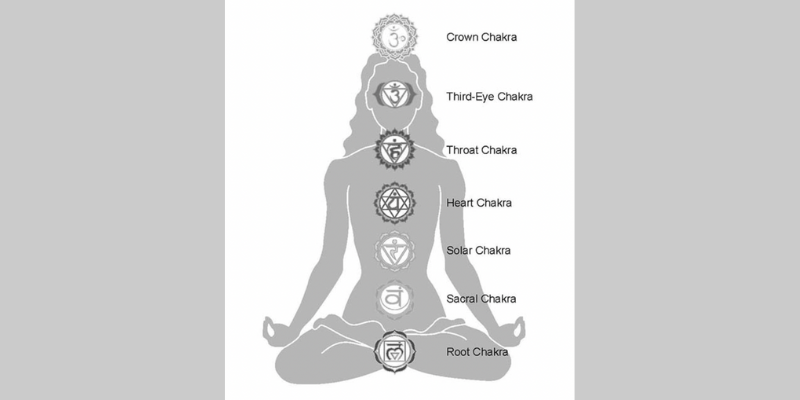
Healing Yoga: A Journey to Physical and Mental Wellness
- January 31, 2024
- Lifestyle and Wellness
- 0 Comments
If you pay attention to your thoughts and feelings, you can do yoga. If you are willing to understand what the body feels and how to take care of it, you can do yoga.
Yoga is not about twisting your body into uncomfortable positions, and you can practice yoga even if you cannot get out of bed.
Healing yoga can teach you how to focus on your mind to change your experience of physical pain, how to transform feelings of sadness, frustration, fear, and anger, and how to listen to your body.
It can help you overcome chronic pain by giving you back a feeling of safety, control, and courage.
It is a powerful way to achieve physical and mental wellness in the long run.
So, if you would like to learn more about healing yoga, let’s read the next part to discover more exciting things about it.
Table of Contents
Understand about Healing Yoga
Yoga is like being in sync with the universe. It’s when each part of your body works smoothly with the elements of the world around you. You’ll feel better emotionally, mentally, and spiritually when you achieve this balance. Your desires will also start coming true naturally.
As you join in the creative flow with the universe, your worries fade, and you experience a carefree and joyful feeling.
Traditionally, there are four forms of yoga:
- Gyan
- Bhakti
- Karma
- Raja
In other words, Healing Yoga is a profound ritual of self-care. You do self-care because of how it affects you.
In a similar way to water lilies, you respond to self-care when the skies are sunny and the water is flowing. The reason they bloom is not because they deserve to but because it is in their nature to do so.
So, when you do physical yoga, you do far more than just stretch your muscles. You transform your body and emotions into an environment that promotes healing and well-being.
It is easy and enjoyable for most people to practice healing yoga. As a beginner, you don’t have to be athletic, flexible, or experienced to do yoga.
Plus, if you have physical limitations, simply do the poses that are appropriate for you.
Why You Need To Know Seven Chakras Before Practice Yoga

To get the best result when doing yoga, you should have experience with chakra. It doesn’t mean you have to become an expert on it; just relax and learn yoga poses for trauma to make the right practice. This way, while doing the poses, you can appreciate and be aware of balancing your psychospiritual physical energies.
Following is a listing of each of the chakras along with their basic physical, mental, emotional, and spiritual concerns.
Each chakra is a wheel of energy. Each of the seven spinning wheels is a field of energy that contains certain physical, mental, emotional, and spiritual content.
For example, the first chakra sits at the base of your spine, and the seventh chakra is at the top, or crown, of your head.
The lower three energy links pertain to basic human survival. They are responsible for your self-image and how you relate to the world around you.
Crown Chakra, Third-Eye Chakra, and Throat Chakra centers pertain to your mind and spirituality.
The fourth energy center is where energies of higher consciousness, including compassion and insight, tend to the wounds of your lifetime, lifting them from darkness into the light of understanding.
How to Healing Yoga Effectively

However, though, while powerful, yoga isn’t a quick fix. Unlike pain pills, which tend to become less effective over time, yoga becomes more and more effective over weeks, months, and even years of regular practice.
It means that the longer and more steadily you practice yoga, the more profound the changes to your body, nervous system, and well-being.
Understanding your pain
Pain is an excellent example of the mind-body connection. A world without pain would be a dangerous place. Pain lets you know when your physical safety and well-being are at risk. It motivates you to save yourself when you are being harmed and learn to avoid things that could harm you.
This feeling that something is wrong is like knowing exactly what is happening in the body and then leading you to find a better thing to make sure you do everything you can to keep yourself safe.
Breath technique
Have you ever noticed what happens to your breath when you’re really stressed or in pain? If not, start paying attention – you’ll likely find that stress and pain often manifest in your breathing.
The good news is you can relax your breath in these situations. When you do, your nervous system gets the message that you’re safe and well.
This sets off a series of positive changes in your body and mind, helping prevent or interrupt a full-blown stress or pain response. The immediate result is that you start feeling better, and at the same time, you’re teaching your mind and body a healthier way to deal with pain and stress.
Researchers studied participants experiencing different emotions and observed changes in breathing rate, depth, movement, tension, and other aspects of breath. Each emotion had its own characteristic changes.
By learning to breathe in a way that supports feelings of comfort, safety, and joy, you gain the ability to choose these positive experiences over suffering.
Moving the Body
The foundation of movement in yoga lies in syncing the body with the breath. An easy example is raising your arms overhead as you inhale and lowering them as you exhale.
In such a simple action, the key to truly experiencing yoga – the unity of body, mind, and spirit – is to merge the movement with the breath completely.
Coordinate the timing precisely, ensuring that your arms lift as long as you inhale. Avoid moments when you’re moving but holding your breath or breathing without movement.
In essence, there should be no separation between your body’s movement and the flow of breath. Try the arm-lifting movement again, extending it across the entire inhalation and exhalation. You may need to slow down either the breath or the movement to achieve this synchronization.
Did you notice a difference in the movement this time? Perhaps it felt more deliberate and meditative. Were you more aware of your breath and body? As you master the art of harmonizing movement and breath, even simple actions can become more intentional and meditative.
Read more: The Significance of Yoga and Meditation in Mental Health.
Important Considerations for Your Yoga Practice
Yoga is not your work or exam, so do no harm and do not force your body. Respect your body, mind, and breath so that you feel comfortable in them and they feel safe with you.
Feel your body and energy. When you are exhausted, go easy on standing poses and keep longer in floor poses.
On other days, when you feel better with more energy, remain in the standing poses long enough to feel the heat. This is purifying, as it reduces stress.
Then, sit for a certain amount of time or use other positions to reset your nervous system. This allows you to relax and calm and reminds your body that ease is a natural state of being.
Adjust your yoga practice to meet your own needs. If you have to deal with recent trauma, be mindful of your energy levels. The thing you can do is use your time on the mat as a way to care for yourself – think of it as carving out a space just for you.
Remember, you deserve gentle care, similar to how a lily needs the sun. If anything gets you hurt, a part of you might wish someone else would take care of you, but it’s essential to do it yourself.
On some days, you can only feel up to a few seated or lying-down poses before needing rest. Finish your practice by covering yourself with a blanket and closing your eyes.
Choose poses that promote feelings of safety and support. Allow yourself some recovery time.
When you feel ready, experiment with standing poses to gauge your stamina. Developing muscular strength can be empowering, especially if you’ve been worn down by past trauma.
Consider incorporating a vigorous practice to build resilience. If your heart hurts, start gently and gradually increase the time spent in heart-opening poses.
Read more: 7 Positive Psychology Exercises to Enhance Your Well-Being.
Final Thought
Finally, healing yoga makes you conscious of your spiritual nature. If your body has been mistreated and degraded, it may feel uncomfortable and unwelcoming. Going to your yoga mat, regardless of your size or shape, sends a message deep inside that you matter. Returning to your mat day after day becomes a place where you tend to your body and spirit.





